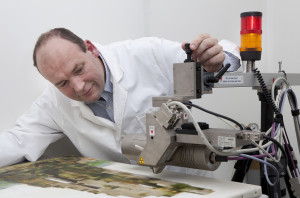Being an artist can be a hard job when it comes to making money and getting customers. One of the best ways to turn your art into income is by licensing your artwork. When you license your art, you’re allowing a bigger company to reproduce it on their end. This isn’t something that needs to be done for all of your pieces, but every artist should have a few in mind that they would like to share with a larger audience. Many times licensed artwork is put onto tote bags, phone cases, pillowcases, and many other products. Licensing agreements state what percentage of sales an artist will receive. Before jumping the gun and licensing your art, here are important things you need to know about licensing.
Manufacturing
There are so many ways and places you can license your artwork. Many times opportunities of collaboration will come up with someone you know or even a brand that saw your art on social media. Check out small local businesses that may be interested in teaming up with an artist to work on their products. Some restaurants might want to rebrand themselves by having new cups and coasters for tables and selling merchandise. If you’re interested in working with a larger manufacturer, then check out options on online stores. Redbuddle is an online shop where over 700,00 independent artists sell their art on just about any product you can think of. This option is great for artists who may not have time to create products themselves.
Understand your Deal
Every licensing deal is different, so it is important as an artist to sit down and understand the terms. For some companies, you may be asked to create art that is specifically designed for them to manufacture. If you team up with a well-known company to license your art this most times means that they take care of work behind the scenes. From manufacturing, shipping, and customer service, none of these things will be on your hands. Look deep into your deals to see if you can license the same pieces of art to more than one company. The most important thing to consider in a licensing agreement is the responsibility of you as an artist and the amount of money you receive from sales.
Enjoy the Benefits
After licensing your art you will begin to gain new customers and attract followers on social media. Your sales won’t only increase through licensing but as well as your selling. It can take some time for your art to be noticed, but once it is, it’s up from there. By continuing to create art and selling it from your home or a local store, and licensing other pieces of art, you’ve created multiple streams of income for yourself!


 As an art collector, a good rule of thumb is to buy what you like, not what you expect to appreciate in value at the fastest rate. First and foremost, it’s a collection and something to be appreciated and enjoyed. Secondarily, it’s an investment. And when it comes to investments, there’s always one tricky thing to figure out: inheritance. An increasingly important part of estate planning is figuring out what will happen to your art when you are no longer around to appreciate it.
As an art collector, a good rule of thumb is to buy what you like, not what you expect to appreciate in value at the fastest rate. First and foremost, it’s a collection and something to be appreciated and enjoyed. Secondarily, it’s an investment. And when it comes to investments, there’s always one tricky thing to figure out: inheritance. An increasingly important part of estate planning is figuring out what will happen to your art when you are no longer around to appreciate it.